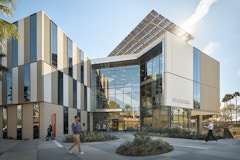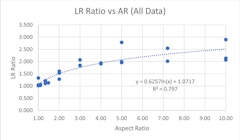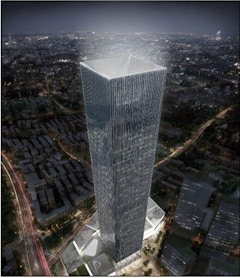147 results
-
Designing for blast performance for glazing units can be very complex. The test methods for evaluating performance include subjecting units to actual…
-
EVA Interlayers in Hardened Facades
- Paper by Nicholas Oberts, PE · Mark K. Weaver, PE, SE · Phillip Benshoof, PE
Explosions can result in very high loads of extremely short durations. Protective design to mitigate the effects of blast loading requires façade
-

Developments in Gridshell Design
- Paper by Cristobal Correa P.E., Principal Craig Schwitter P.E., Principal
In 1959 Heinz Isler challenged the world of concrete shell design by proposing a series of shapes for shells that were very different from what most… -

Designing with Photovoltaics
- Paper by Wayne Walker · Julia Ragragio Ruiz, LEED AP BD+C · Sam Crawford
Photovoltaics (PV) have been utilized in buildings for decades, especially in Europe where legislative support has largely driven the market. With
-
Sacramento Capitol Annex Skylights
- Paper by Sophie Pennetier · Houston Drum
This article documents the development or the design of two skylights on the Sacramento Capitol Annex Project throughout Design Assist and sheds
-

Prefab Facades – from Prototype to Product?
- Paper by Lisa Rammig · Andrea Zani · Tim Murphy
Building envelopes are not only an immediately visible part of the building, they have also become a major factor both for cost and performance of
-

Facade Wind Loading
- Paper by Timothy Brewer, CEng, MICE, George Kantrales, Ph.D., Eric Sammarco, Ph.D., P.E., Carrie Davis, P.E., LEED Green Assoc.,
Wind induced pressure is a major design consideration for building facades. However, the effects of facade geometry and urban terrain on wind loading… -
Facade Design Beyond Buildings
- Paper by Michele Andaloro, Associate Enrica Oliva, Partner and COO Lucio Blandini, Managing Director
At the core of facade design is the concept of interdisciplinarity, a bridge between concept and materialization apt to relay a built form… -
Edge Lighting Glazing with Hidden Fixtures
- Paper by Dave McCarroll · Dan Weinreber · Lei Fu
Dynamic architectural lighting in urban areas is a key element in creating attractive nighttime icons in addition to potentially generating
-

Highly Efficient Façades with Innovative Shading and Light Control
- Paper by Klaus Reuschle · Robert Matthew Noblett · Michelle Siu-Ching Lee · Roman Schieber
The Science and Engineering Complex (SEC) on the Allston Campus is the largest new building at Harvard University in recent decades with a footprint
-

Facade Resilience Evaluation Framework
- Paper by Fabio Favoino · Adèle Chalumeau · Audrey Aquaronne
Resiliency is the capacity of a building (or building component in the case of the facade) to support building functionalities during extreme events
-
Advances in Laminated Glass Engineering
- Paper by Richard Green PE (WA, NY, TX, CO, OR, MT), M.IEAUST CPEng, NER(Aus), APEC Engineer, IntPE(Aus), RBP(Vic), Principal - Owner
The stability of monolithic glass fins is reasonably well defined; as an elastic material it behaves in a similar manner to other elastic materials… -

Fixed Edge Supports
- Paper by James G. Soules, Ph.D., P.E., S.E., P.Eng., SECB, F.SEI, F.ASCE · Stephen M. Morse, Ph.D., P.E., M.ASCE · Scott H. Norville, P.E., Ph.D.
Model building codes and standards in the United States use a probabilistic model to define glass load resistance (LR). In general, these model
-

Let Thin Glass in the Facade Move
- Paper by Prof. DI Dr. Jürgen Neugebauer, DI Dr. Markus Wallner-Novak,
Facades play an important role in the control of energy flow and energy consumption in buildings as they represent the interface between the outdoor… -

Multifunctional Building Material Glass - A Colourful Bunch Of Requirements
- Paper by Michael Elstner, Steffen Schäfer,
Glass as a building material plays a very important role in modern architecture, determines our visual landscape, and fulfills practical functions… -

City Development and Cladding Design
- Paper by Hadil Abdallah, Building Sciences Consultant Girma Bitsuamlak, Professor and Canada Research Chair in Wind Engineering at the University of Western Ontario Hamid Vossoughi, PE, P. ENG., Senior Principal
High-rise buildings in growing cities could become more vulnerable to variations in wind flow due to the continuous changes in urban topology. The… -
Behind the Surface
- Paper by Damon Caldwell,
The architectural facade, like clothing for a building's form, serves as both an aesthetic expression and a protective veil, concealing the inner… -

Climate-Oriented Prefabricated Building Envelopes
- Paper by Sridharan Gandhi · Andrew Tsay Jacobs, AIA, EIT, LEED AP BD+C · Karen Kensek, Assoc. AIA, LEED AP BD+C
Facades developed in response to climactic factors increase performance and human comfort while reducing energy loads. A single building envelope
-

Feasibility of Measuring Stress in Glass with a SCALP
- Paper by Nabhajit Goswami · Stephen M Morse, P.E., Ph.D.
The SCALP device is designed to measure the residual compressive surface stress of glass. As the SCALP does not rely on the birefringence properties
-
Retrofit Options for Historic Facades
- Paper by Carrie Davis, P.E., LEED Green Assoc. · George Kantrales, Ph.D. · Matt Barsotti · Andrew Schoenheit · Ty Vandergriff
Building design criteria requires that government buildings be designed for a variety of extreme loads including blast, hurricane, and impact

